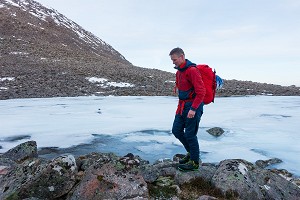
Life used to be simple; I had a box of 'running stuff' and a cupboard of 'climbing stuff' with any clothing clearly belonging only in one place or the other. But these days the line is much more blurred. There seem to be so many options around clothing which can have multiple roles and uses. These two jackets from Mountain Equipment, the Aerotherm and the Firefly, definitely fall into that grey area; in other words, they're really versatile.
The Aerotherm is a light hooded softshell jacket, and the Firefly a lightweight waterproof shell; the two complement each other well, so we're reviewing them together here.
Both are categorised in the 'mountain running' section of the ME website yet if you saw them hung up in an outdoor retailer I bet most people, including runners, would not instinctively think they were for running. I have used both of these jackets in various weather conditions and for a range of activities including hill running, walking and rock climbing in Scotland. As winter now approaches with more challenging and changeable weather these might be just the ticket for all sorts of uses, not just for running. This is particularly true of the Aerotherm.
Aerotherm - £200
This is one of the many softshells available these days to feature a weather-resisting outer combined with a lightly insulating inner layer. It's a bit like a slightly lighter, more windproof and more running-tweaked take on Mountain Equipment's Kinesis jacket, or perhaps more accurately you could consider it to be an insulated version of the Aerofoil windproof.
The beauty of the Aerotherm is its versatility. It keeps the wind off and repels a fair bit of weather; it offers just a little insulation, but not so much that you boil inside. Put it on at the start of the day and just keep wearing it, whether moving or stationary, simply adding or removing other layers as required.
Outer
The Aerotherm has a very light outer soft shell fabric which makes it feel like you are wearing a towny shell suit. This thin Exolite double weave fabric is very soft, and while it feels as though it becomes smeared against your skin in any kind of wind it does keep a surprising amount of that wind out. It also dries very quickly. On the occasions it does get wet I've found that moisture in the wet outer does not seem to cross over into the insulation layer. So while it is not waterproof it does provide a good degree of weather protection.
One thing to bear in mind for climbing and scrambling is the lightness of the fabric. Don't climb too many granite chimneys, it clearly won't fare well from a lot of contact with rough rock.
Inner
There's a lightweight grid fleece as an inner throughout, which is quick drying and breathable, and offers a modicum of warmth while being thin enough that you shouldn't overheat on the move in cooler conditions. To help keep things airy you also get a gap under the armpits as a simple alternative to pit-zips. Similarly there is no insulation in the hood, but the collar does come up high on the neck, roughly to the level a hat would come down to, so there are few potential cold spots and gaps.
Pockets
One chest pocket and two zipped handwarmer pockets are provided - plenty for phone, hat etc - with the micro-grid fleece on both inner faces of the pocket.
Hood
The hood is close fitting - helped in this by not having the layer of insulation the rest of the jacket has. It's not sized for use with a helmet, which is a minor limitation for the Aerotherm from a climbing point of view, though by no means a deal breaker [some might suggest a hoodless version would be neater for climbing in - Ed.]. Possibly as a consequence of being thinner, the hood really flaps about in the wind if you are not wearing it. Luckily there is a flap to hold down the hood, fastened with poppers - I have attempted to secure the hood whilst wearing it but generally give up as it is a bit of a fiddle; easier just to take the jacket off.
Fit
This top comes in both men's and women's sizes. I have the men's medium; I'm 179cm and 75kg, fairly lightly built, and this is the ideal fit on me. Its active cut allows good movement, with minimal hem lift when your arms are raised - always a key point for climbing or scrambling. The sleeves are long enough to keep your wrists covered when climbing, and to pull your hands into the elasticated cuffs if you're needing some more warmth when running in the cold.
Weight
At just 300g (size M) this is a very lightweight softshell, ideal for active use even in mild-ish weather or all-year wear as part of a layering system. The featherweight outer and insulation layers are all pretty minimalist. However I was quite surprised that it does not pack down as small as I thought it would. On the plus side it is designed to stuff into its own pocket, which comes complete with two loops so you can clip it to your harness - always a helpful option if you're on a multipitch route and don't want to carry a pack.
Uses
I have used this for hill running in a variety of weather conditions and find it very versatile in use, as a windproof-plus. I have to confess I have always previously restricted myself to a 'waterproof shell or nothing' approach to outer layers. The jacket has been great as it seems to span a range of typical UK conditions where I would normally be constantly considering putting a shell on or taking it off. Now we're into autumn, and with winter approaching fast, this jacket will be ideal for hill running adventures - but less likely for hill races. In the UK, hill races and Skyraces usually require mandatory kit which includes full waterproof shell clothing. In races I suspect people would be more likely to stick to a waterproof shell most of the time.
In terms of non-running uses, it's very clearly got you covered for general hillwalking, backpacking (being so light...), scrambling, and rock climbing in cool or breezy weather. I also think this jacket will prove to be genius as an outer layer for brisk winter climbing walk-ins, where you may want some weather protection in rapidly changing conditions, but only a bit of insulation. Get to the bottom of your route and you could just leave it on as one of your climbing midlayers.
Value for money?
Out of 13 softshell jackets/tops on ME's website, this is the third most expensive. It's not cheap, especially considering that it is minimalist, but then neither is the Kinesis, nor similar offerings from most other brands. I think it's a jacket well worth having, and its versatility alone might justify the price.
Overall
I was expecting to overheat in this jacket at times, but I haven't yet done so. However it does successfully keep out squally wind and weather, keeping me comfortable without the trade off of cooking and getting sweaty in a waterproof shell. I am very happy with this jacket because of this and it has definitely filled a gap in my outdoor wardrobe - and not just for running. But if you want some 'aero' without any 'therm' then look at the Aerofoil, which features the same outer fabric minus the grid fleece lining.
Ethics and environment
Mountain Equipment are members of Fair Wear, and committed to implementing high standards of working conditions in the factories that they use.
Firefly Jacket - £250
Light, packable, minimalist, and highly breathable, the Firefly would be an ideal shell for hill running but is equally suited to walkers and backpackers.
Fabric
The fabric is clearly a defining feature that will make any shell sink or swim. The expectation with Gore-Tex is that it is completely windproof and guaranteed to keep you dry; this has certainly been my experience using this jacket. Feeling light for a three-layer fabric, Gore-Tex Active 2.0 is Gore's most breathable product, and very clearly aimed at the 'brisk activity' end of the spectrum. It's also quite stretchy. Lighter fabrics do wear out faster and I've always wondered whether stretch waterproof fabrics deteriorate faster than others with the membrane being repeatedly put under tension? This is not a shell I would repeatedly climb in - it'll last longer if you save it for more pedestrian activities. The fabric is bonded and sealed with skinny tape which probably shaves a few more grams off its overall weight. The one I have is in an amazing gold colour ('acid').
There is just the one! ME helpfully include a reminder note in the chest pocket that external pockets are not completely waterproof so devices like phones should have other protection such as a waterproof bag. My phone does not fit this pocket - not even close - but this is not an issue as most people probably would not put a phone in there if they were hill running anyway.
Main zip
It can be quite easy for lighter weight fabrics to snag in zips, but the baffle behind the main zip is stiffened, which should prevent this happening altogether. This stiffening also seems to make it easy to engage and fasten the zip at the bottom when wearing gloves. However the unintended consequence is this stiffened material can be annoyingly uncomfortable around your chin sometimes if running with the hood up and all zipped up in bad weather.
Hood
The hood has a stiffened section - I would not call it a peak but it is enough to help divert rain from running onto your face too much. There is some adjustment possible but this has very small range.
Fit
Again, the Firefly comes in both men's and women's versions. It's a trim fit - I have the men's medium jacket, which feels quite a close, neat cut - but in a good way. The stretch of the fabric helps you not to feel constrained. This is a personal thing but I have always thought that jackets for running could benefit from being longer. The Firefly is no exception. While it's long 'enough', if I'm out running in poor weather I always find myself wanting to pull it down down further - a minor irritant. One is less likely to put waterproof trousers on when hill running, unless it is really horrific weather. Therefore a longer coat helps keep shorts and general gusset area a bit dryer - this is the bit most likely to chafe and be uncomfortable when wet.
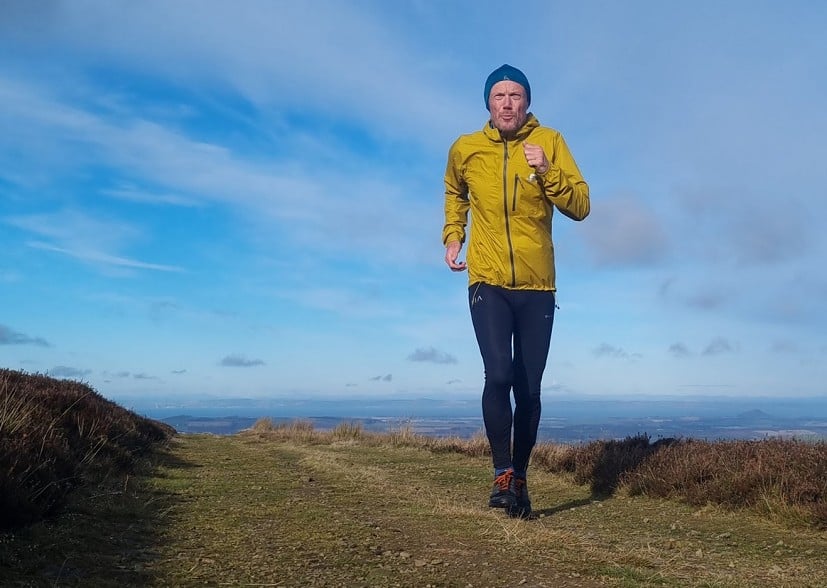
There are thin velcro fasteners on the cuffs but they don't add much. We've previously tested a similar ME jacket, the Impellor, which was their superlight GoreTex Active 2.0 offering at the time, and had a moan about the cuffs being too small; well the Firefly is a great improvement, with cuffs large enough to fit over a bulky watch.
Weight
At only 200g (size M), the Firefly might not be quite down there with the very lightest shells money can buy, but it still feels pretty lightweight and minimalist to us. It has advantages over some of the skimpier competition, being cut for movement (not just to meet a headline weight figure), and with really decent breathability courtesy of that market-leading fabric.
Use
There is no obvious ME partner product for waterproof shell trousers - this is a consideration for those who are doing hill races as they will be a requirement in the UK. However, similar to the Aerotherm, although this product is aimed at running in the hills I bet most people would take something lighter if they were racing. Most of the running I do is during training and for fun; and for most hill running most of the time, especially as winter approaches, this is the shell I will be taking. It'd be ideal for lightweight backpacking too, or summer hillwalking with a stripped-down pack.
Overall
This is a really well-made, well-fitting shell jacket of the quality we expect from Mountain Equipment. The design is simple and almost 'featureless' and gets the most out of that amazing Gore-Tex Active 2.0 fabric so it can keep you dry and comfortable. Looks great as well. And a final big plus is that it's made in Ukraine - every little must help.

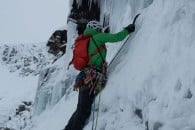


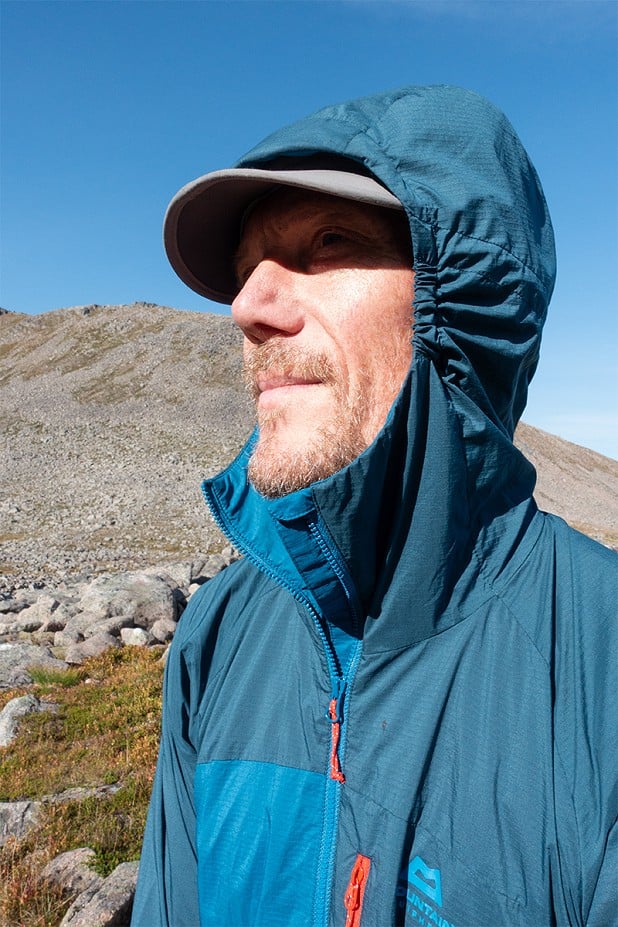
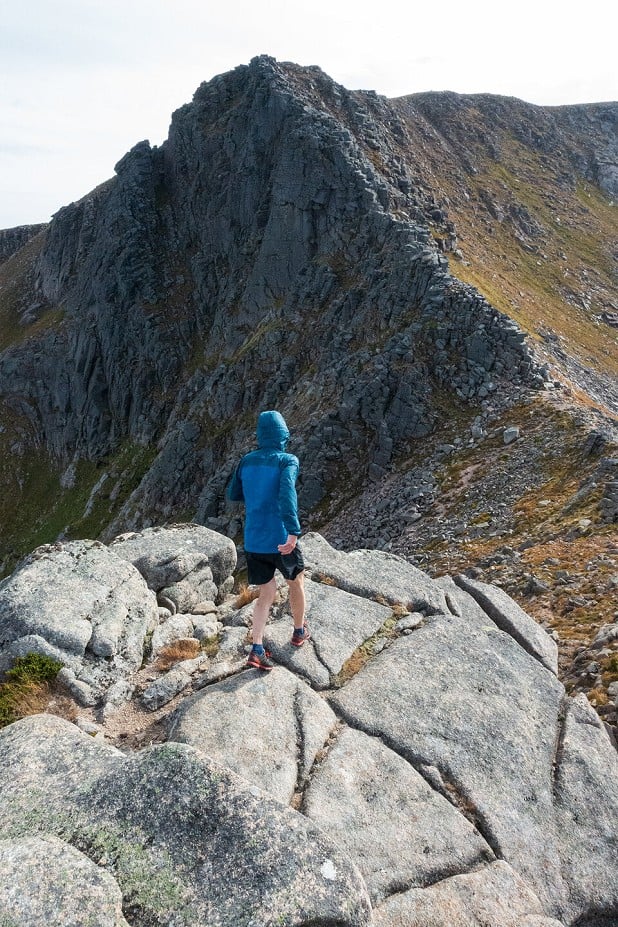

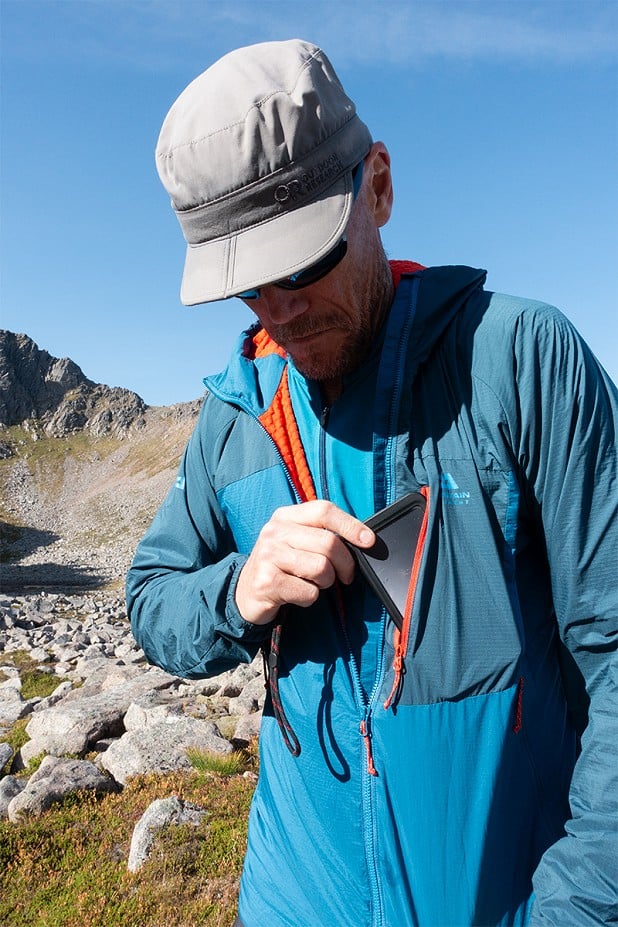
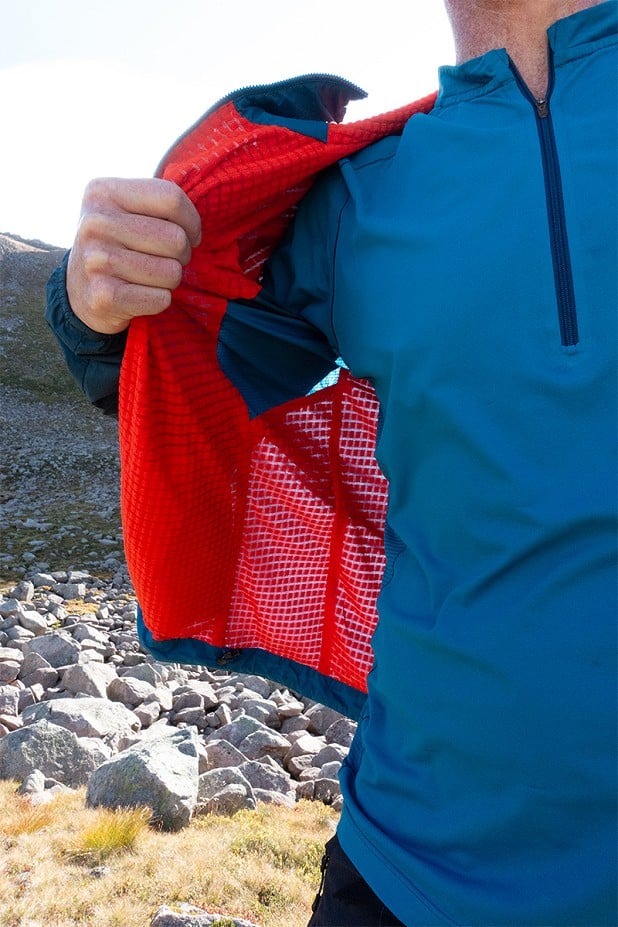
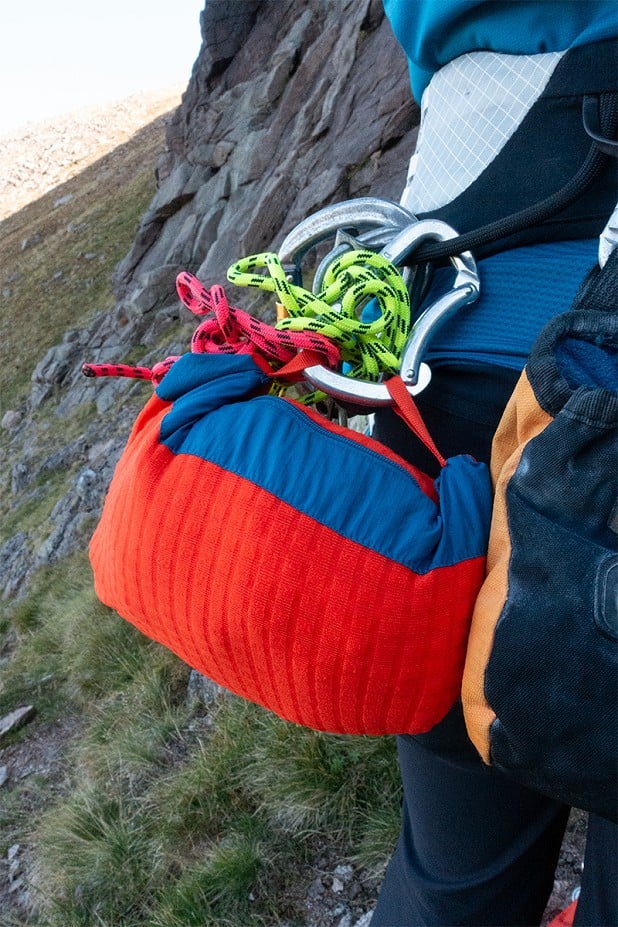
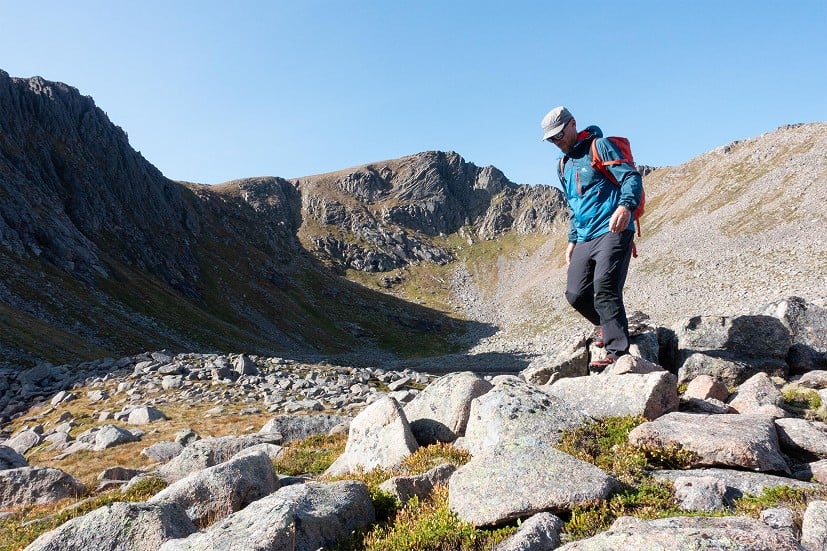
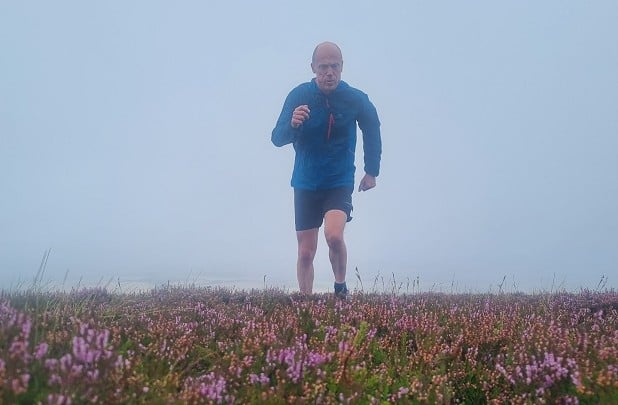
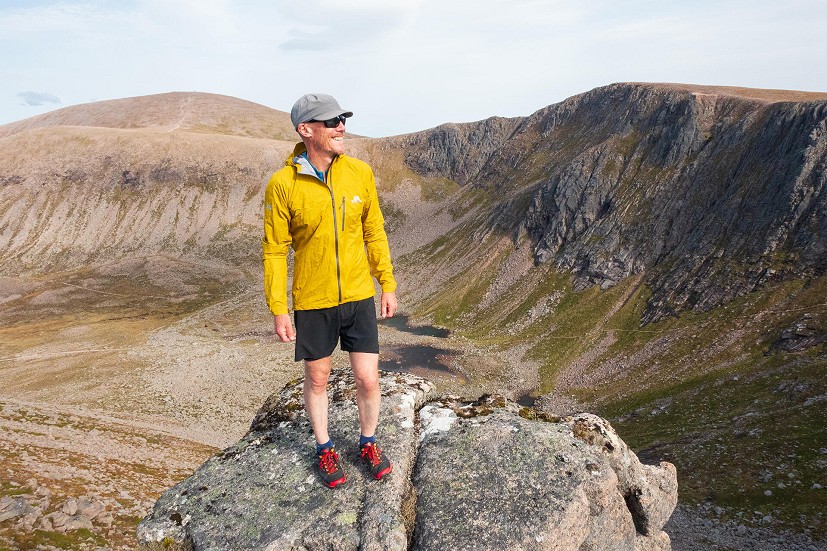

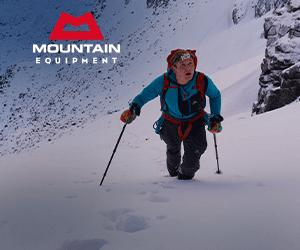




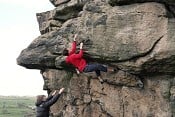


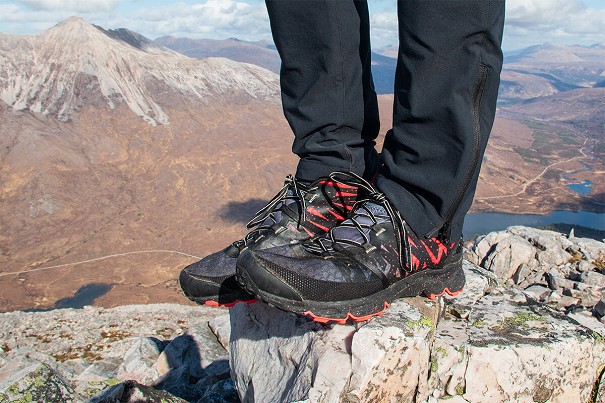
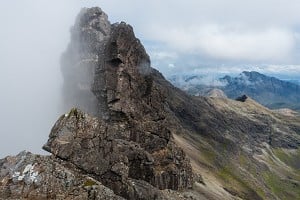
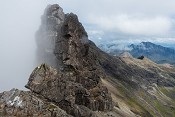
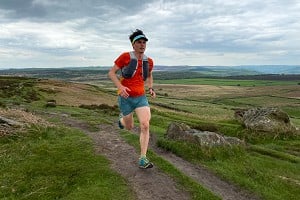
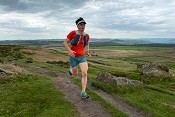


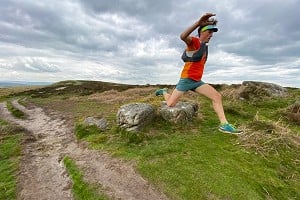

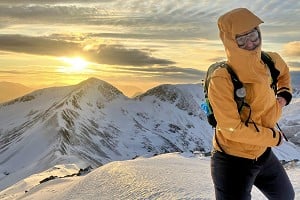
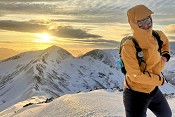
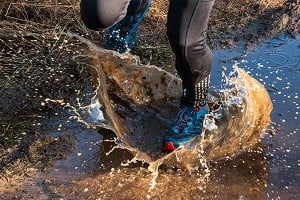
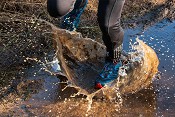


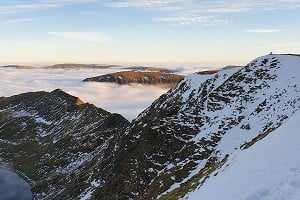
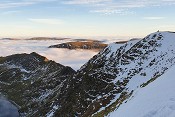

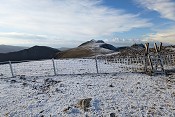




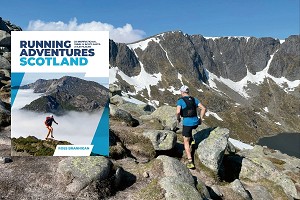



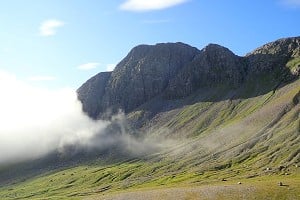
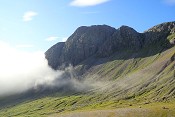
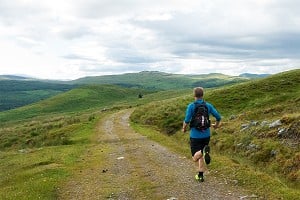
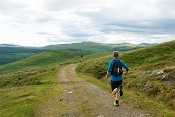
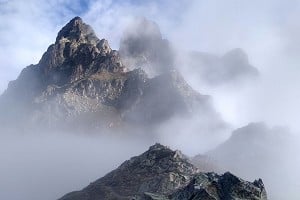
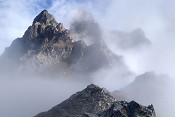
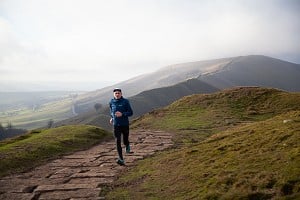





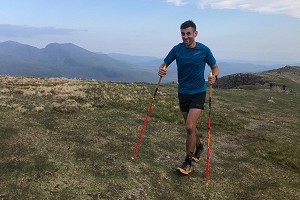
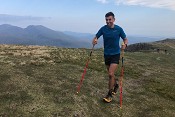


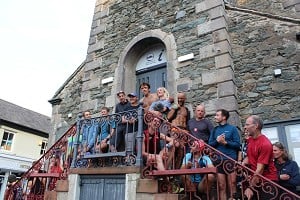







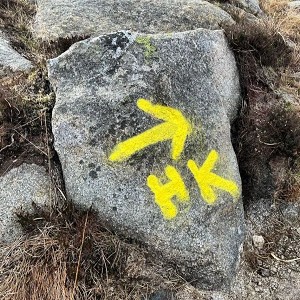
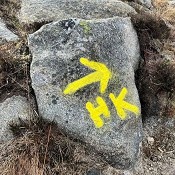


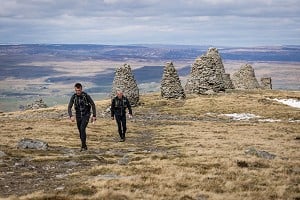
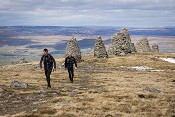
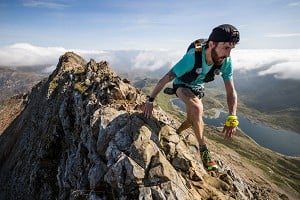


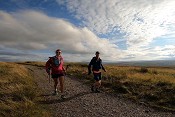


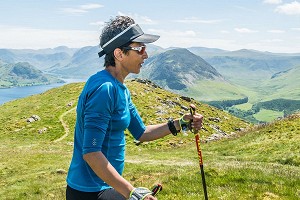
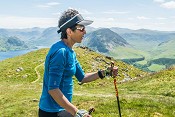
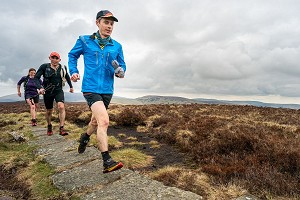
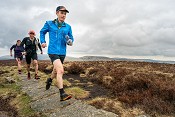
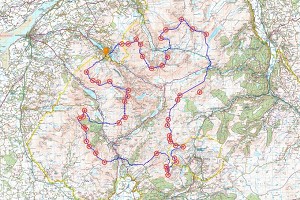
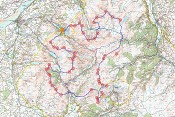

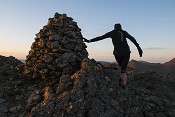
Comments
Excellent reviews. Interesting to hear you say you've always been a waterproof or nothing sort of user when it comes to hill running; I've tended to always just a windproof and avoid going out on days when a waterproof needs to be worn more than it doesn't. I must have been an early adapter as I think there is a great deal of cross over between hillwalking/mountaineering and running gear; particularly for the longer slower runs (lets be honest most hill running (except for specific shorter interval training) includes a good deal of hiking/slower paced hill movement for nearly all of us.). I think unless your winter climbing in Scotland, lots of hill walkers would be more comfortable for the majority of the day dressing more like runners.
Made in Ukraine!? That's really interesting eh? I wonder how long that has been going on. Definitely the first time I've heard of factories in Ukraine making anything for the outdoor industry. Hope it's a success for the Ukrainian partners of ME.
many years ago I had a pair of XC fishscale skis from Decathlon that were made in Ukraine
They do a fair few niche products. I've been eyeing up these DCF tents for a while: liteway.equipment
Love to hear that ME has some manufacturing in Ukraine
Pretty sure they had a fair bit of manufacturing in Ukraine pre war. All their Gore-Tex Pro stuff was Hungry and Ukraine*. Guess they've managed to start it back up again.
*https://www.mountain-equipment.co.uk/pages/making-of-gore-tex-aw20
Practicing Craft
Our GORE-TEX PRO garments are produced with one of our longest standing manufacturing partners; based in Hungary and with manufacturing facilities also in Ukraine, we have partnered with them for almost half of the 40 years for which they have been making garments.